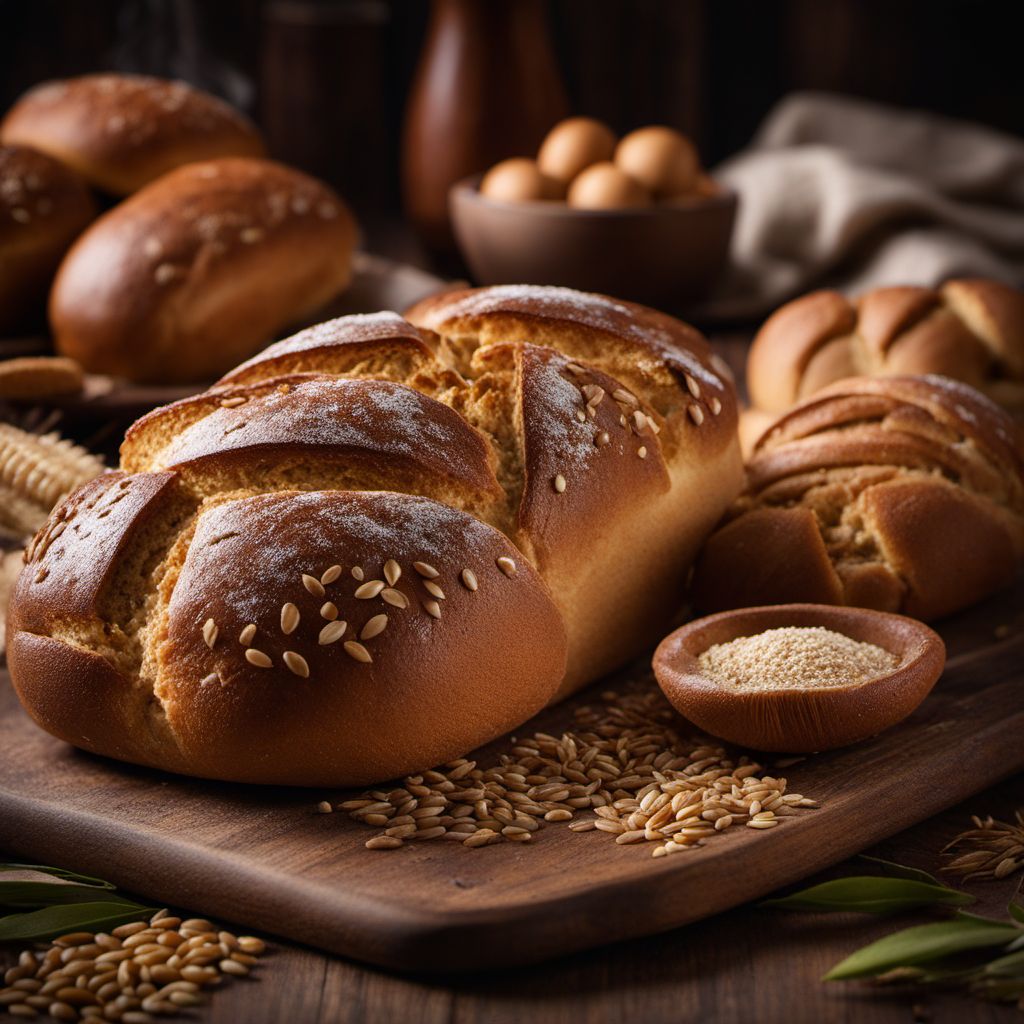
Ingredient
Rye-wheat bread and rolls, refined flour
Hearty Grain Delights
Rye-wheat bread and rolls are made from a combination of rye and wheat flours, resulting in a dense and chewy texture with a slightly nutty flavor. The rye adds a distinct earthiness, while the wheat provides a lighter and softer crumb. These bread and rolls are perfect for sandwiches, toast, or enjoyed on their own.
Origins and history
Rye-wheat bread and rolls have a rich history in European cuisine, particularly in countries like Germany and Scandinavia. Rye has been cultivated for centuries in these regions due to its ability to thrive in colder climates. The combination of rye and wheat flours in bread-making dates back to medieval times, when wheat was often mixed with rye to stretch the more expensive wheat flour. Today, rye-wheat bread and rolls continue to be beloved staples in many European cultures.
Nutritional information
Rye-wheat bread and rolls are a good source of dietary fiber, providing a healthy boost to digestion. They also contain essential minerals such as iron, magnesium, and zinc. Additionally, these baked goods are lower in gluten compared to bread made solely from wheat flour, making them a suitable option for individuals with mild gluten sensitivities.
Allergens
Contains gluten.
How to select
When selecting rye-wheat bread and rolls, look for loaves or rolls that have a dark, rich color and a firm crust. The bread should feel heavy and dense, indicating a higher proportion of rye flour. Avoid bread that feels overly light or has a pale color, as it may contain a higher proportion of wheat flour.
Storage recommendations
To maintain the freshness and quality of rye-wheat bread and rolls, store them in a cool, dry place, preferably in a bread box or a paper bag. Avoid storing them in plastic bags, as this can cause moisture buildup and lead to mold growth. If the bread or rolls are not consumed within a few days, they can be frozen for longer-term storage.
How to produce
Rye-wheat bread and rolls can be produced by combining rye flour and wheat flour in the appropriate ratio, along with yeast, water, and other optional ingredients such as salt or sweeteners. The dough is then kneaded, allowed to rise, and baked until golden brown. Amateur bakers can experiment with different ratios of rye and wheat flours to achieve their desired texture and flavor.
Preparation tips
Rye-wheat bread and rolls can be enjoyed in various ways. They make excellent sandwiches, providing a hearty base for fillings such as deli meats, cheeses, or vegetables. They can also be toasted and topped with spreads like butter, jam, or avocado. Additionally, rye-wheat bread and rolls are a great accompaniment to soups, stews, or enjoyed alongside a cheese platter.
Culinary uses
Rye-wheat bread and rolls are commonly used in European cuisines, particularly in countries like Germany, Sweden, and Denmark. They are often served with traditional dishes such as sausages, smoked fish, or hearty stews. In Scandinavian cultures, rye-wheat bread is a staple for open-faced sandwiches, known as smørrebrød.
Availability
Commonly available in European countries such as Germany, Sweden, Denmark, and Finland.
